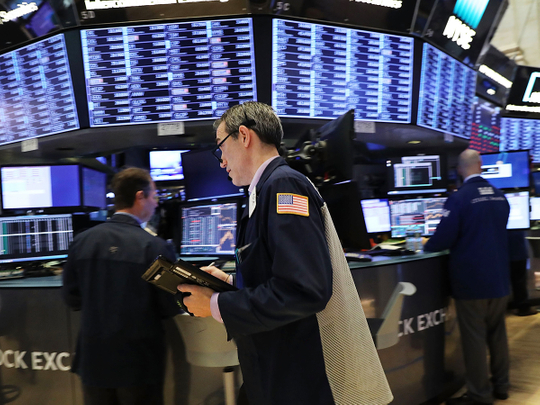
London: European shares recovered on Tuesday after feeling the strain of a tech rout on Wall Street, while the dollar lost momentum as hopes mounted for a de-escalation in the Sino-US tariff war.
Fears of a peak in corporate earnings growth, softening global demand and rising interest rates in the United States have put investors on edge in the past month.
The trade war between Washington and Beijing plus risks from Brexit and Italy’s budget row with the European Union have helped the dollar as investors dump riskier assets. Volatility is on the rise again.
Monday’s equity sell-off in the US was led by tech stocks, with Apple’s stock slumping over 5 per cent.
But fears about a long-term slump in technology stocks faded on Monday as investors focused on efforts to ease trade tensions between the world’s two largest economies. The pan-European STOXX 600 had gained 0.5 per cent by 1130 GMT.
Markets in Asia also recouped some losses after a report that China’s top trade negotiator was preparing to visit the United States before a meeting between the leaders of the world’s two largest economies.
The Shanghai Composite Index rose 0.9 per cent but Japan’s Nikkei lost more than 2 per cent.
“Though there have been some efforts to resolve the [trade war] tensions in recent days, in my opinion things are likely to get worse before they get better,” said UBS chief executive Sergio Ermotti.
Some reckon that US President Donald Trump will turn up the heat over trade. His administration is broadening its trade battle with a plan to use export controls, indictments and other tools to counter alleged Chinese theft of intellectual property, the Wall Street Journal reported.
Riskier assets including Asian equities have been hurt by rising US interest rates. The Federal Reserve is expected to tighten policy further in December.
In Europe, sterling jumped half a per cent to as high as $1.2924 after a British cabinet office minister said a Brexit agreement with the EU was still possible in the next 24 to 48 hours.
A growing rift over Italy’s budget has hit the euro recently but the currency rose from a 16-month low to $1.1258, up 0.3 per cent.
The Italian government faces a Tuesday deadline to submit a revised budget to the EU. Its refusal so far to cut the draft deficit sets the stage for a collision with Brussels.
The political malaise in Europe failed to aid the dollar against a basket of currencies. At 1200 GMT it was down 0.1 per cent at 97.4. It had hit 97.7 on Monday, its highest since June 2017.
“After the Fed’s hawkish policy outlook last week, investors are pretty happy to reload on long dollar positions. The European currencies still look most vulnerable to me,” said Valentin Marinov, head of G10 FX strategy at Credit Agricole.
Oil prices fell more than 2 per cent on Tuesday after US President Donald Trump put pressure on Opec not to cut supply to prop up the market.
Brent dropped $1.97 a barrel, or 2.8 per cent, to a low of $68.15 before recovering to around $68.72, down $1.40, by 1140 GMT. US light crude was $1.30 lower at $58.63.
Both crude benchmarks have fallen more than 20 per cent since peaking at four-year highs in early October.
Saudi Arabia’s energy minister sent Brent crude futures around 2 per cent higher on Monday with comments that Riyadh could reduce supply to world markets by 500,000 barrels per day in December.
Spot gold was down 0.2 per cent at $1,198.11 per ounce.












